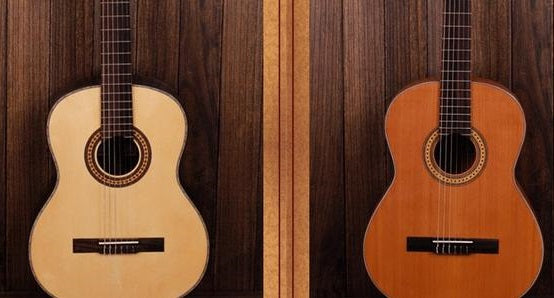
How to Choose a Guitar ?
Share
We often talk about different guitar masters. They are very different playing styles, techniques, and sound effects. The due to the reason that their choice of instruments is also very different, so on what basis should we choose a guitar that suits us?
"There can be no perfect guitar" is a truth. For example, if you want to use to play Robert Johnson's vibe with a Martin 00-45, it is impossible. The fact is so simple: different musicians, different styles of music, personal playing styles and other factors all have impacta on the choice of instruments.
In other words, if you particularly like the style of a musician's music, then just choose according to the player's selections. For example, if he has spruce panel and rosewood back side, then just go for the same. You don’t have to buy then one that cost tens of thousands of dollars, but some of the hundred dollar ones are not bad at all, and after you select the similar shape and details, you can almost get a sound that is 80% -90% similar.
The characteristics density of wood, sound field pattern, shape and size of determined the sound of a guitar. Among them, wood should have the greatest impact on the sound. To quote an experienced luthier, "you can choose among 200 panels of wood. Although they are from the same tree, each of them are different, and sometimes you may have good luck. Some wood will produce unexpected outcome during the processing, and then you have made a world-class guitar."
The panel is the decisive factor of the guitar tone. Spruce and red pine are the first choice woods for soundboards due to their natural resonance. Among spruce, Sitika spruce and Engelmann spruce are the most common, while German spruce and Adirondack spruce are also used.
Sitika spruce is hard and heavy. Because of this, it is durable and has a long service life. Wood with good elasticity often ages at a normal rate, but it will take a long time to age. Sitika Spruce is most ideal for folk guitars. However, some guitar manufacturers occasionally use it to create classic guitar panels. In general, spruce wood can make the guitar have a wider range, which includes a very clear bass and bright and very penetrating high.
Sitika spruce is perhaps the most widely used soundboard material. It blends with many music styles and performance styles. However, some people have noticed that it is not as sensitive to light taps as Ingman and German white pine. Sitika lacks strong overtones and the sound becomes weaker when tapped.
The density and weight of Engelmann spruce are closer to those of cedar. The lightness characteristic makes it have better resonance and louder sound effect. It is more suitable for expressing deep bass and powerful mid voice. Engelmann works well when expressing rich and complex sounds, but its overtones are not that rich.
Another species of fir, Adirondack spruce, grows on the East Coast of the United States, extending from New York to Tennessee. This wood is hard and light, and has excellent sound quality. However, due to the shortage of raw materials, it is rarely used now. It can be found in many limited edition guitars ‘s panel.
In the next chapter, we will talk about the different effects of the wood on the back and side panels.

4 comments
JlPzEcBtdoUhu
IrRHgJcb
KVnjkFPX
kUxrKBYEHLVsO